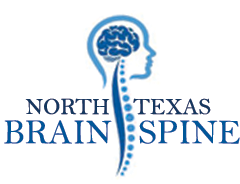Hemifacial Spasm: neuromuscular disorder characterized by involuntary spasms of the muscles on one side (hemi-) of face.
Hemifacial Spasms
What are Hemifacial Spasms?
Hemifacial spasm is a neuromuscular disorder that results in involuntary twitching and contraction of the facial muscles on one side of the face. The facial nerve is the 7th cranial nerve, and it controls the facial muscles. This nerve originates from the brain stem, exits the skull below the ear, and then separates into five major branches. These branches control the muscles that move the eyebrows, eyelids, mouth and lips.
What Causes Hemifacial Spasms?
The main causes of hemifacial spasms are injury, irritation or disturbance of the facial nerve. These can be the result of direct injury to the facial nerve or compression of the nerve by a brain tumor, blood vessel, or other structure. However, there are some cases where hemifacial spasms have no apparent causes.
Symptoms and Diagnosis
The most common symptom of a hemifacial spasm is an intermittent twitching and contraction of the eyelid muscles. The spasm may then gradually move toward the lower portion of the face and cause it to be pulled to one side. If the spasm continues, it can eventually affect one entire side of the face and cause continuous twitching.
The diagnosis will involve a review of your medical history and a neurological examination. An MRI might be ordered to determine if the cause is a tumor, arteriovenous malformation, or an aneurysm.
If the cause is an artery or a vein compressing the facial nerve, it may be difficult for imaging techniques, like an MRI or a CT scan, to show the precise location of the abnormal vessel.
How are Hemifacial Spasms treated?
Following options are available to treat hemifacial spasms:
Medication: Anti-convulsant medicines might be prescribed to block firing of the nerves. Muscle relaxants may help to relax the facial muscles. Mild cases of hemifacial spasms generally respond well to medication.
Botox injections: Botox is a protein produced by certain bacteria. This protein blocks release of the messages that cause muscles to contract. A fine needle is used to inject botox directly into the facial muscles. The results start to appear within three days and generally last for a few months.
Surgery: Surgery is typically an option if other options fail to provide relief from their spasms. A surgical procedure known as microvascular decompression is used to relieve compression on the nerve.




